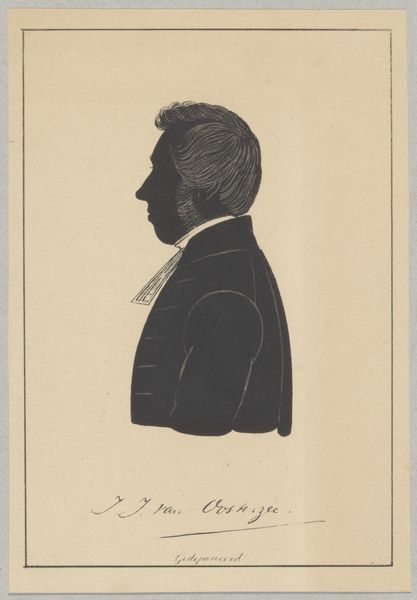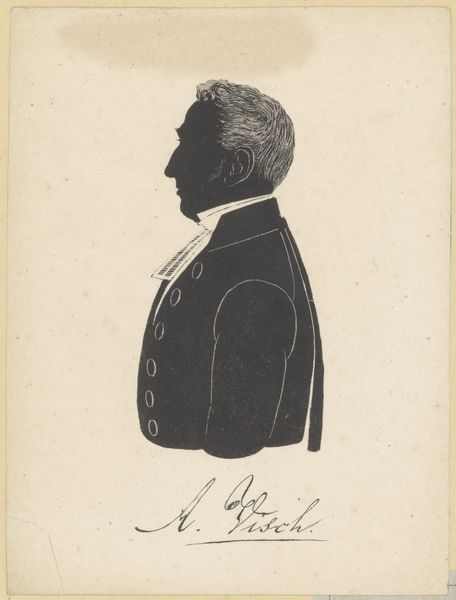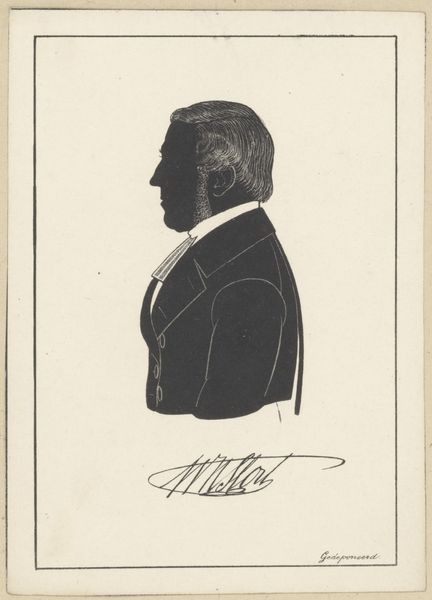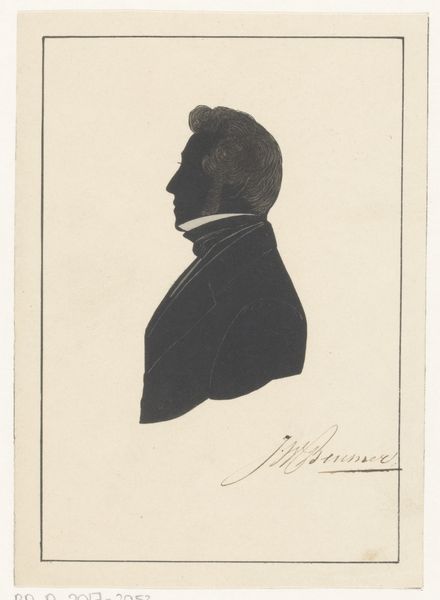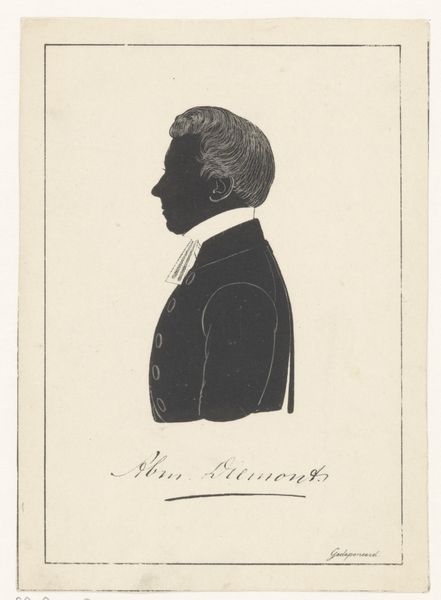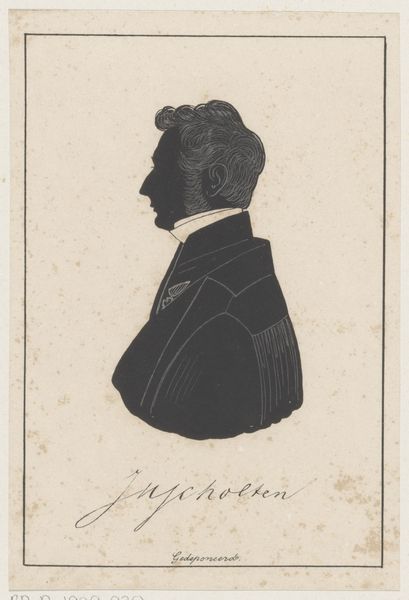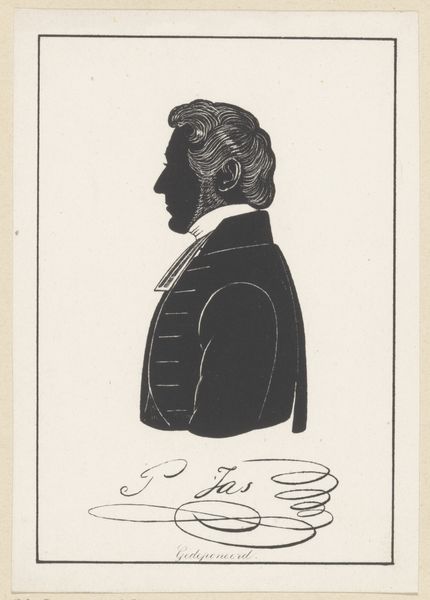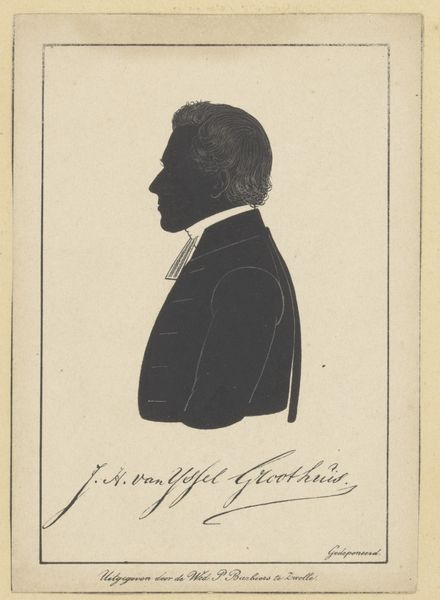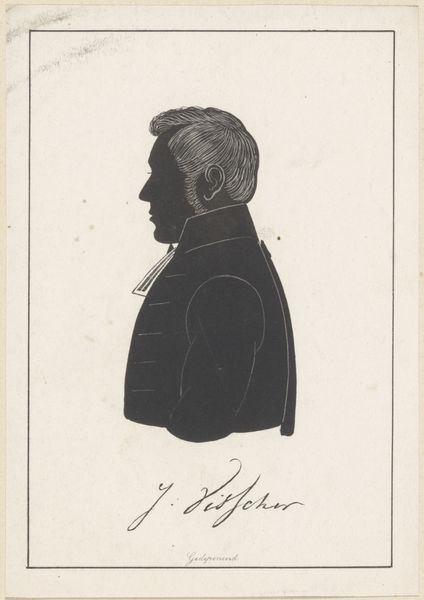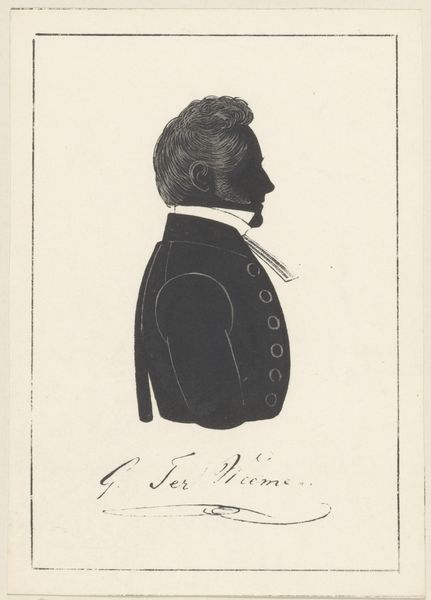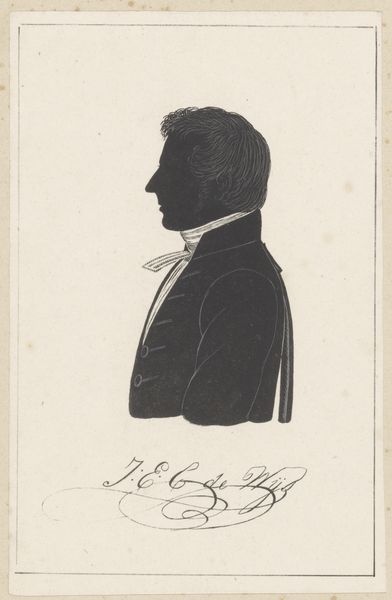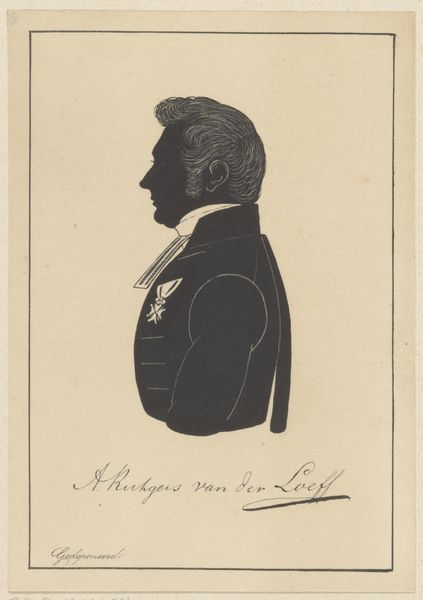
print, paper, ink
#
portrait
# print
#
paper
#
form
#
ink
#
romanticism
#
line
Dimensions: height 150 mm, width 104 mm
Copyright: Rijks Museum: Open Domain
Curator: This stark silhouette presents Sijo Kornelius Thoden van Velzen, captured in ink on paper by Pieter Barbiers the Fourth sometime between 1809 and 1848. The print's a sharp contrast, a study in form. What stands out to you immediately? Editor: The crispness. It's so binary, all black and white, a portrait defined by what it chooses to omit. This is more than just a likeness; it’s a statement about social codes, particularly concerning gender and class in early 19th century Netherlands. Curator: Absolutely. The silhouette became a popular medium precisely because of its capacity for abstraction, flattening individual identity into a more generalized symbol. This man's severe profile speaks volumes, doesn't it? The upward-swept hair is almost an icon of Romantic masculinity! Editor: It screams privilege. Consider the sitter; his name, Van Velzen, signals status. The precise delineation of his garments - the high collar, the meticulously tailored jacket – they amplify this image’s value as a cultural artifact that tells a silent history about visibility and erasure within that era's social hierarchy. Curator: You make an important point about the performative aspect of portraiture, especially silhouette. Think about it: to have your silhouette captured was a deliberate act, a conscious staging of self. Beyond pure representation, it served to condense an individual’s essence into easily consumable—and distributable—image. That is quite an idea. Editor: Precisely. It reminds us that portraits aren't innocent records but active participants in shaping identity. Whose stories do we choose to remember? Whose faces become emblems of power? These artistic choices determine how history writes, or rather draws, its narrative. Curator: Thinking about how this links to the larger project of memory, it hits a nerve. This stark silhouette stands not just for him as an individual, but an idea about the construction of remembrance itself. Editor: It prompts us to interrogate whose stories these visual shorthands privilege—and at whose expense. It leaves one lingering question about whether true self-perception can be translated into symbolic visibility, or will we continue to be constrained by what others want to see in us.
Comments
No comments
Be the first to comment and join the conversation on the ultimate creative platform.
